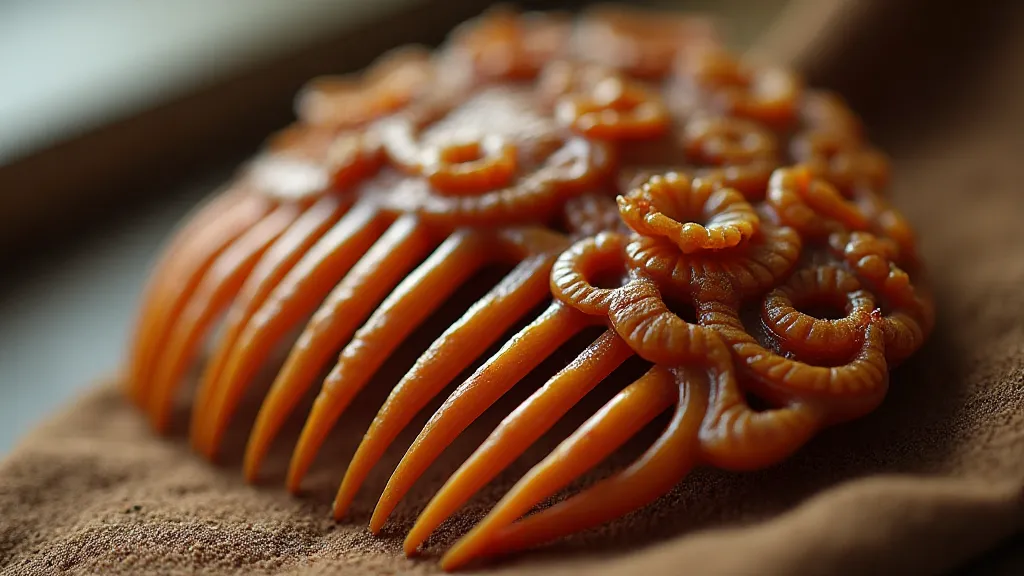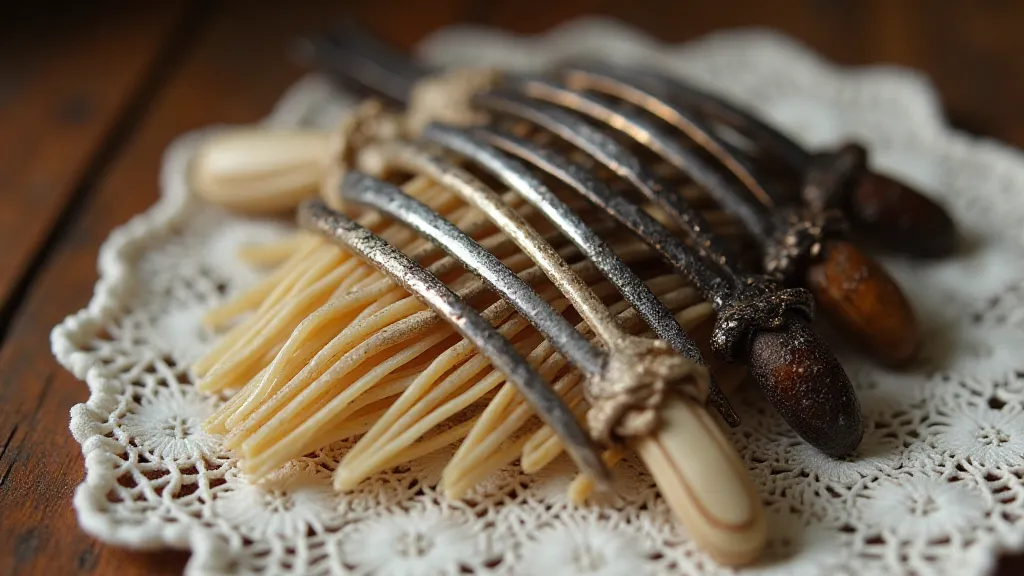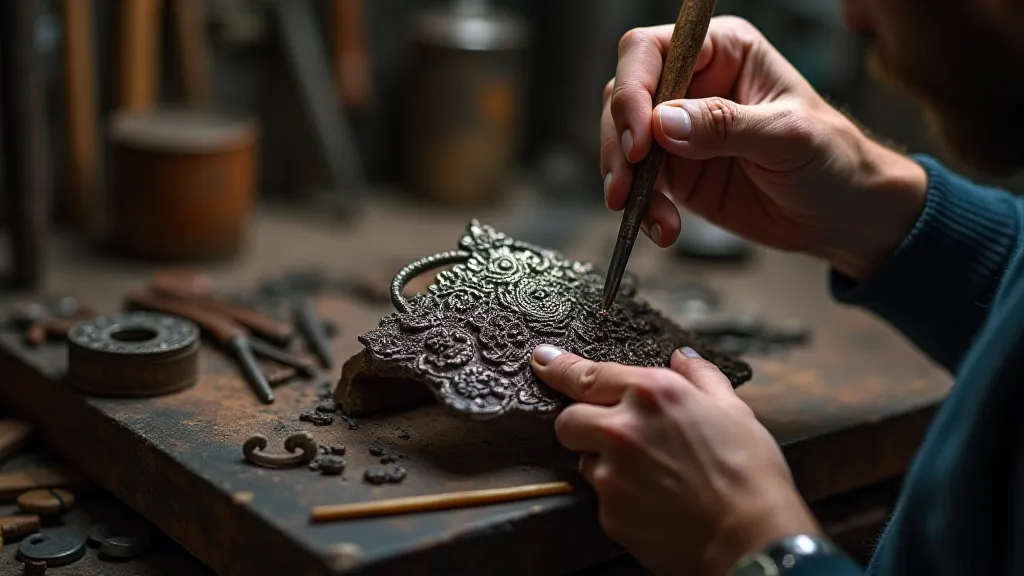Beyond the Surface: Identifying and Appraising Rare Antique Comb Materials
There’s a quiet poetry to holding an antique hair comb. More than just a functional object, it’s a tangible link to the past, a whisper of vanished glamour and meticulous craftsmanship. It’s a small piece of history, nestled comfortably in your hand. But truly appreciating these treasures – and building a collection worthy of admiration – requires moving beyond the surface, understanding the significance of the materials that crafted them. This isn’t just about recognizing pretty patterns; it’s about deciphering a story etched in horn, silver, and shell.
My own fascination began with a single, unassuming comb I found tucked away in an antique shop in rural England. It wasn’t particularly ornate, just a simple rectangular shape of dark, mottled material. The shop owner, noticing my interest, explained it was tortoiseshell – a term I’d only encountered in novels. That single conversation opened a world of discovery, leading me on a journey to understand the materials, the techniques, and the stories behind these beautiful objects.
The Allure of Tortoiseshell: A Material of Luxury and Loss
For centuries, tortoiseshell, derived from the shells of Hawksbill sea turtles, was the gold standard for hair combs. Its rich, amber hues, the delicate grain, and the way it could be polished to a lustrous sheen made it irresistible to wealthy women across Europe and America. Imagine the elaborate hairstyles of the Victorian era, held in place by these luxurious combs - a symbol of status and refinement. The intricate carving that could be achieved was astonishing; delicate floral patterns, geometric designs, and even miniature portraits were painstakingly rendered into the shell.

Sadly, the demand for tortoiseshell led to devastating consequences for sea turtle populations. Today, sourcing true antique tortoiseshell is the only ethical way to acquire it. Be wary of sellers claiming to offer “new” tortoiseshell combs; most are made from imitation materials or sourced unethically. Examining a comb closely can often reveal its authenticity. True tortoiseshell has a distinctive layered appearance when viewed under magnification, and a subtle, earthy scent. The history of collecting these materials, and the complex ethical considerations they present, is a fascinating study in itself. For those grappling with the moral dimensions of antique collecting, especially concerning materials with such a poignant past, further exploration into topics like Ivory’s Lament: Ethical Considerations in the Vintage Comb Collector's Pursuit can provide valuable context.
Silver’s Shine: From Functional Necessity to Ornamental Art
Silver hair combs, often hallmarked, offer a different kind of allure. While initially used for their practical strength and durability, silver combs evolved into ornate objects of art. The Victorian and Edwardian periods saw a rise in silver craftsmanship, with combs becoming canvases for intricate detailing – chasing, repoussé, and filigree work were commonplace. The higher the silver purity (sterling silver being the most common), the more valuable the comb is likely to be, all other factors being equal.
Look for hallmarks – small stamped symbols that indicate the silver’s purity and the maker's mark. These marks can be traced, providing insights into the comb's origin and age. The condition is crucial for silver combs; tarnish can detract from the beauty and value. While polishing is possible, be cautious with antique pieces, as aggressive cleaning can damage delicate details.
Horn and Ivory: Considerations and Caution
While less common than tortoiseshell or silver, hair combs crafted from horn and ivory also exist. Horn combs, often made from cattle horn, were a more affordable alternative to tortoiseshell, and were popular among the middle classes. Ivory, derived from elephant tusks, offered a beautiful cream-colored material that could be carved with remarkable precision.

However, both horn and ivory present significant ethical considerations today. The ivory trade is heavily regulated due to the impact on elephant populations. Any ivory comb you consider acquiring *must* be demonstrably antique and comply with all relevant laws and regulations. It is imperative to be able to prove its age and origin legally. Horn combs, while less controversial, also deserve a level of respectful consideration regarding animal welfare. Understanding the larger cultural and historical landscape that shaped these collecting trends is key. The significance of these objects extended beyond mere aesthetics; they were intertwined with social rituals and status displays. Those interested in exploring the intricacies of these bygone eras and how objects signaled social standing might find Whispers of the Salon: The Social Rituals Surrounding Vintage Hair Combs particularly enlightening.
Beyond Material: Craftsmanship and Design
The value of a vintage hair comb isn’t solely determined by the material it's made from. The level of craftsmanship plays a pivotal role. A master carver could elevate even a relatively common material like horn into a work of art. Pay attention to the precision of the carving, the intricacy of the design, and the overall finish of the comb. Are the teeth evenly spaced and well-shaped? Are there any signs of hasty or careless workmanship?
Furthermore, design trends influence value. Combs that reflect popular styles of the time – Art Nouveau floral motifs, Edwardian geometric patterns, or the streamlined designs of the Art Deco era – often command higher prices. Originality also matters. A unique or unusual design can make a comb significantly more desirable to collectors.
Restoration and Preservation: A Gentle Approach
Most antique hair combs will have some degree of wear and tear. Minor scratches and surface blemishes are often part of the comb’s history and should be left untouched, as they contribute to its character. However, more significant damage, such as broken teeth or loose carvings, may require professional restoration.

It's crucial to find a conservator specializing in antique metalwork or organic materials – someone who understands the importance of reversible techniques and minimal intervention. Avoid aggressive cleaning methods or DIY repairs, as these can easily damage the comb and decrease its value. Prevention is key: Store your combs in a cool, dry place, protected from sunlight and humidity. The significance these items held for individuals and the broader social structure of past eras underscores the importance of ethical acquisition and careful preservation. The stories these objects tell aren’t merely about materials and craftsmanship; they’ve been instrumental in defining social standing and revealing insights into specific time periods. Those who want to delve deeper into how material objects reflect and reinforce societal hierarchies may find The Gilded Cage: Social Class and the Display of Status Through Hair Combs to be a valuable resource.
The Larger Narrative: Objects as Historical Echoes
Beyond the technical aspects of identifying and appraising antique hair combs, lies a deeper appreciation for their place within the broader historical narrative. These combs are not just beautiful objects; they are tangible links to the past, providing glimpses into the lives, customs, and aesthetics of generations past. Examining them through a lens of social history allows us to understand not only how they were made and used, but also what they *meant* to the people who owned and cherished them. The intricate details of design, the careful selection of materials, and even the wear and tear accumulated over time, all contribute to a rich tapestry of stories waiting to be uncovered.
Consider the woman who held a tortoiseshell comb during a lavish Victorian ball, the young lady carefully arranging her hair with a silver comb before a courtship stroll, or the shopkeeper proudly displaying a horn comb as an affordable luxury. Each comb carries within it a whisper of these experiences, offering a unique and intimate connection to the past. They illuminate the often-unseen lives of those who came before us, providing a tangible reminder of our shared human history.
The practice of collecting itself is a fascinating reflection of changing tastes and values. What was once considered a commonplace item might later be rediscovered as a treasured antique, imbued with a newfound appreciation for its craftsmanship and historical significance. This cycle of rediscovery and reevaluation is a testament to the enduring power of objects to captivate and inspire across generations. The stories embedded within these items speak volumes about societal shifts and evolving aesthetics. They offer a window into the past, allowing us to better understand the forces that have shaped our present. Those fascinated by the overall arc of time and how material objects capture those movements through narrative may find The Gilded Echoes of Eras Past: How Forgotten Accessories Illuminate Narrative Threads a thought-provoking examination.
Ultimately, appreciating antique hair combs is about more than just recognizing their monetary value. It's about embracing their story, honoring the craftsmanship, and preserving a tangible piece of our shared cultural heritage. By understanding the materials, the techniques, and the historical context, we can unlock a deeper appreciation for these exquisite objects and ensure that their story continues to be told for generations to come.





